 To enhance service speed and avoid tariff delays, we've opened a US warehouse. All US orders ship directly from our US facility.
To enhance service speed and avoid tariff delays, we've opened a US warehouse. All US orders ship directly from our US facility.
| Cat. No. | Product Name | Field of Application | Chemical Structure |
|---|---|---|---|
| DC33730 | FAUC-365 Featured |
FAUC 365 is a highly dopamine D3 receptor-selective antagonist with Ki values of 0.5 nM, 340, 2600, and 3600 nM at D3, D4.4, D2short, and D2Long receptors, respectively. FAUC 365 can be used for the research of schizophrenia, and Parkinson's disease.
More description
|
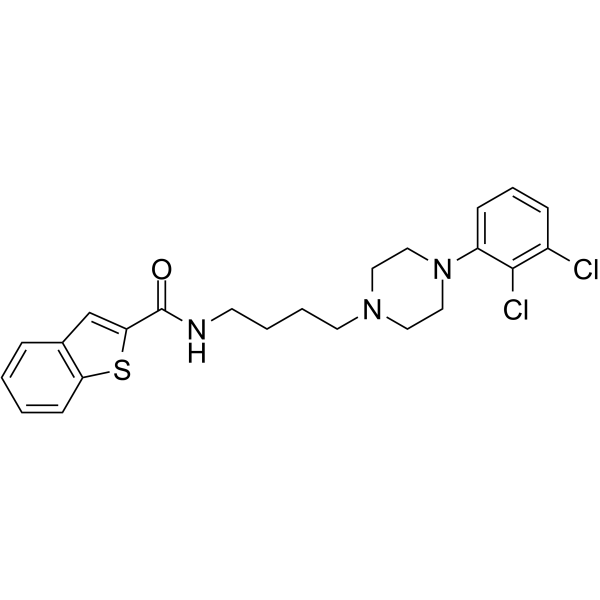
|
| DCC1968 | Entasobulin Featured |
Entasobulin is a β-tubulin polymerization inhibitor with potential anticancer activity.
More description
|
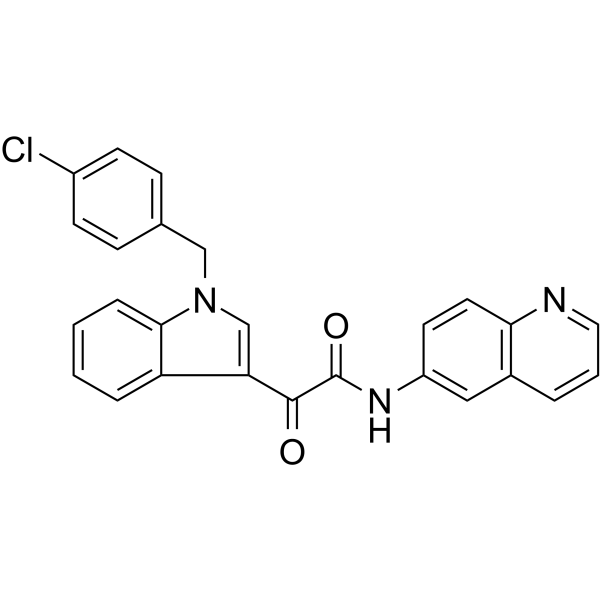
|
| DC33632 | CAY10594 Featured |
CAY10594 is a potent phospholipase D2 inhibitor. CAY10594 ameliorates acetaminophen-induced acute liver injury by regulating the phosphorylated-GSK-3β/JNK axis.
More description
|
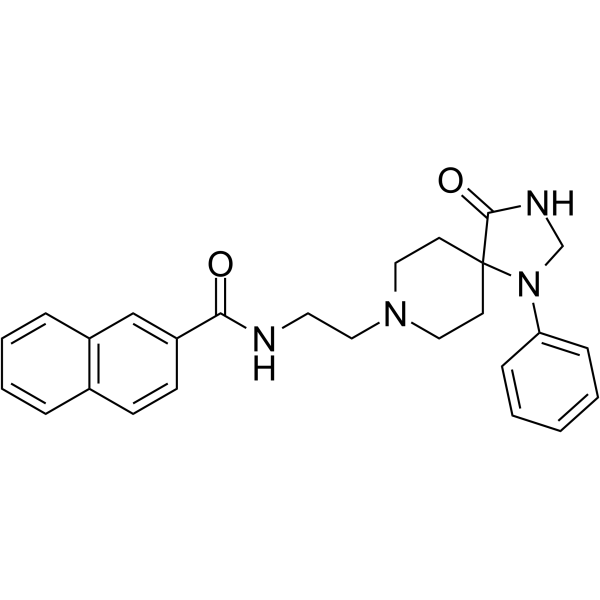
|
| DC33584 | ARN14974 Featured |
ARN14974 is a benzoxazolone carboxamide inhibitor of acid ceramidase (IC50 = 79 nM).
More description
|
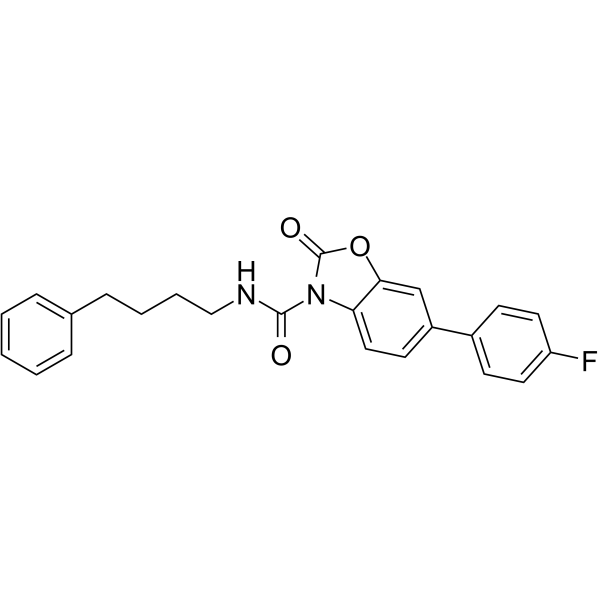
|
| DC74203 | TR-107 Featured |
TR-107 (TR107) is a highly potent, selective and orally bioavailable small-molecule activator of the mitochondrial protease ClpP with EC50 of 140 nM, binds to purified ClpP with Kd value of 180 nM in surface plasmon resonance (SPR) measurement.
More description
|

|
| DC31809 | Pindolol Featured |
Pindolol is a moderately lipophilic beta blocker. Pindolol is a SR-1A/SR-1B antagonist with similar affinity for each subtype. Pindolol acts as a partial agonist at mouse and human β3-AR (β3-adrenoceptors). Pindolol is an inhibitor of β1-AR.
More description
|
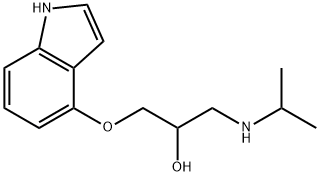
|
| DC21790 | VA-012 Featured |
VA-012 is a potent, selective 5-HT2C receptor positive allosteric modulator (PAM) that exhibits dose-dependent potentiation of 5-HT efficacy with EC50 of 16 nM.
More description
|
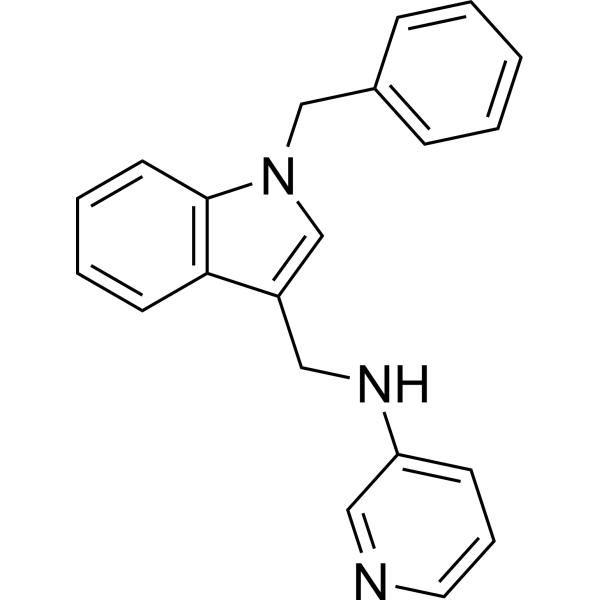
|
| DC34384 | NQTrp Featured |
NQTrp, an aromatic naphthoquinone-tryptophan hybrid molecule, an inhibitor of the aggregation of the tau protein with generic anti-amyloidogenic effects. NQTrp inhibits the in vitro aggregation of hexapeptide (41GCWMLY46 within the N-terminus of γD-crystallin) as well as full-length γD-crystallin.
More description
|
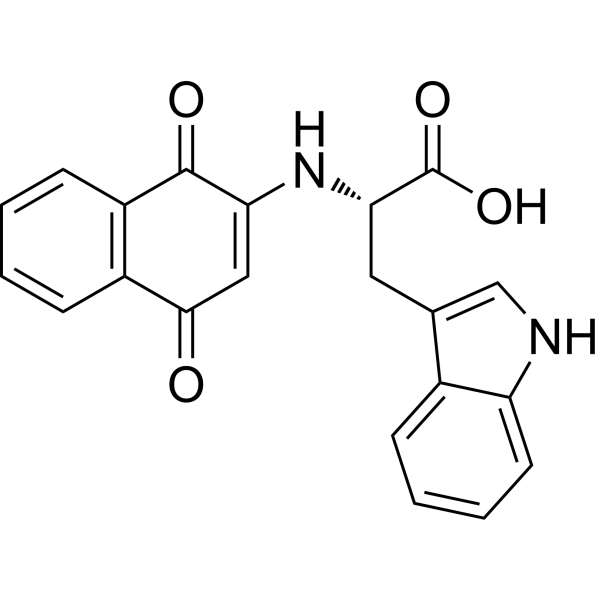
|
| DC7291 | GSK650394 Featured |
GSK650394 is a novel SGK inhibitor with IC50 of 62 nM and 103 nM for SGK1 and SGK2 in the SPA assay respectively.
More description
|

|
| DCC3008 | L-778123 Featured |
L-778123 is a dual FPTase and GGPTase-I inhibitor, with IC50s of 2 nM and 98 nM respectively.
More description
|
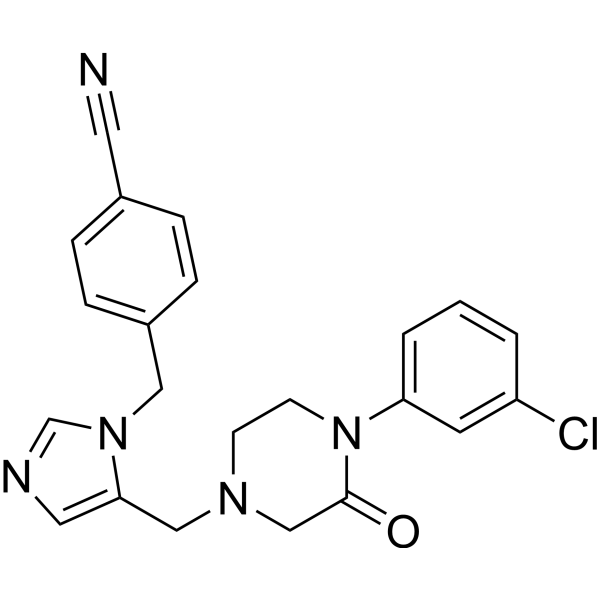
|
| DC7406 | Dynasore Featured |
Dynasore is a cell-permeable small molecule that inhibits the GTPase activity of dynamin1, dynamin2 and Drp1, the mitochondrial dynamin.
More description
|
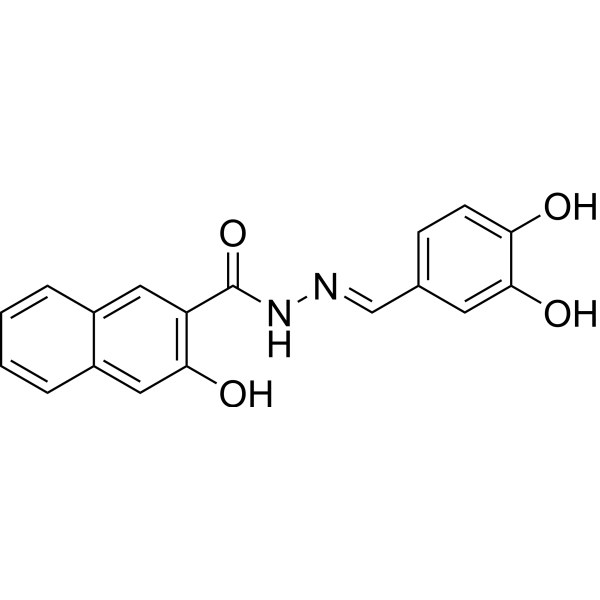
|
| DC21347 | MS0124 Featured |
MS-0124 is a potent and selective inhibitor of G9a-like Protein (GLP) lysine methyltransferase with IC50 of 13 nM, shows >30-fold selectivity for GLP over G9a and other methyltransferases..
More description
|
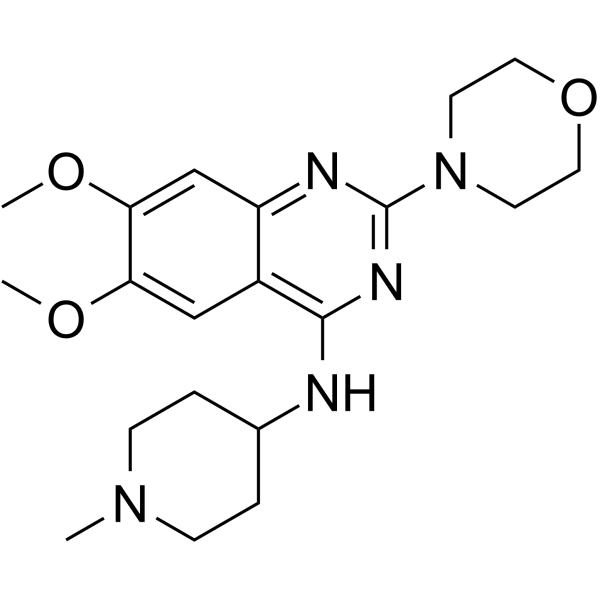
|
| DCAPI1199 | Lonidamine Featured |
Lonidamine (AF-1890) is a hexokinase and mitochondrial pyruvate carrier inhibitor (Ki: 2.5 μM). Lonidamine also inhibits aerobic glycolysis in cancer cells. Lonidamine can be used in the research of mitochondrial metabolism and inflammation, such as pulmonary fibrosis.
More description
|
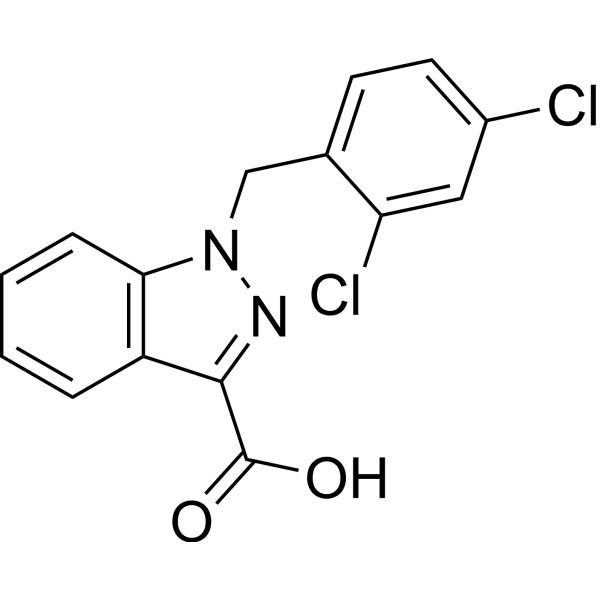
|
| DCC2842 | JNJ-40355003 Featured |
JNJ-40355003 is a potent and selective atty acid amide hydrolase (FAAH) inhibitor.
More description
|
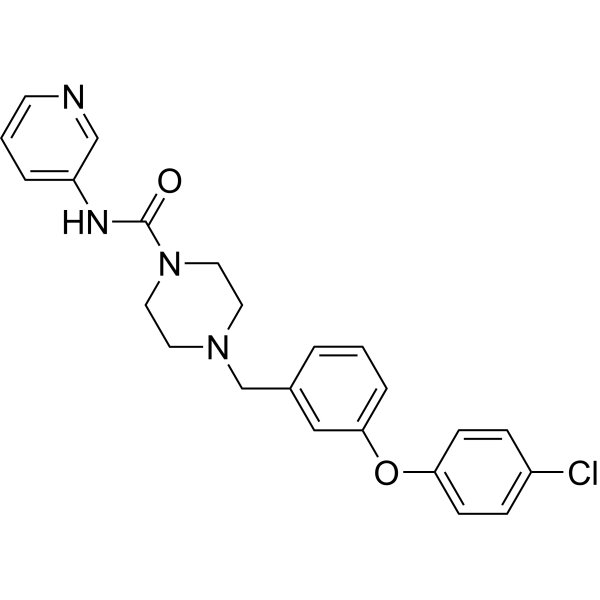
|
| DC37547 | Sulfanitran Featured |
Sulfanitran is a sulfonamide antibiotic which is used in the poultry industry. It is a component of Novastat, Polystat, and Unistat, brand names of feed additives for chickens used to control Coccidioides spp.
More description
|
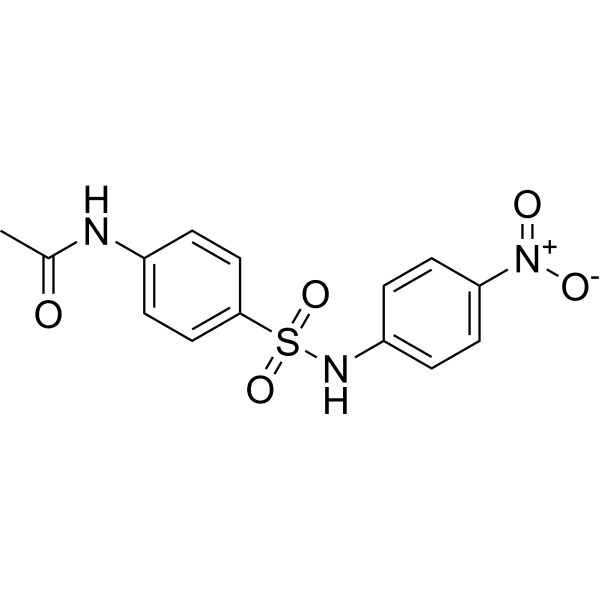
|
| DCC0887 | Bavisant dihydrochloride hydrate |
Bavisant dihydrochloride hydrate (JNJ31001074AAC) is an orally active, potent, brain-penetrating and highly selective antagonist of the histamine H3 receptor. Bavisant dihydrochloride hydrate can be used for attention-deficit hyperactivity disorder (ADHD) research.
More description
|
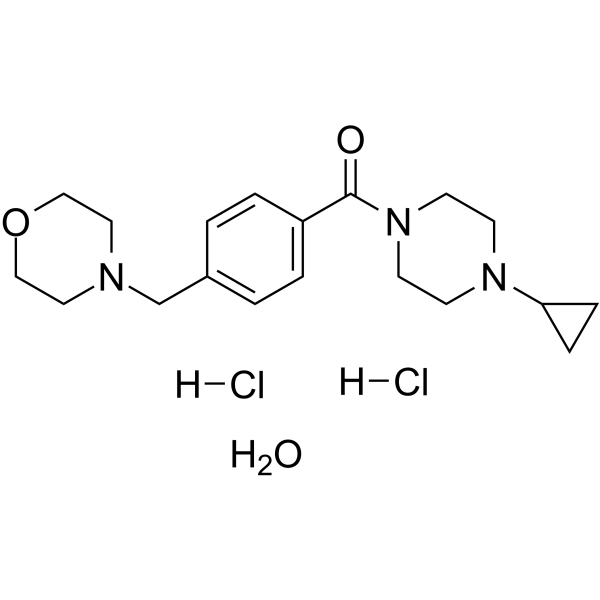
|
| DC22290 | Aranidipine (MPC1304) Featured |
MPC1304 is a Ca2+ channel antagonist with potent and long-lasting antihypertensive effects. IC50 & Target: Ca2+ Channel.
More description
|
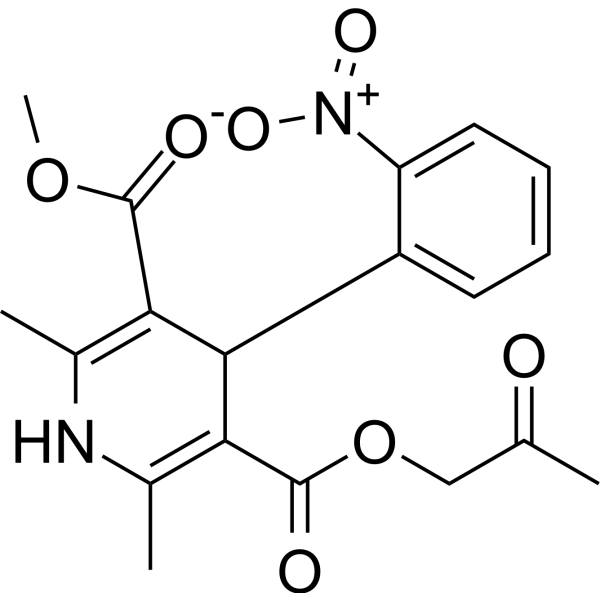
|
| DC23833 | SB 4 (Eticovo) Featured |
BMP signaling agonist sb4 is a small molecule BMP signaling agonist with EC50 of 73.6 nM, enhances the efficacy of BMPs and activates endogenous BMP4 target genes.
More description
|
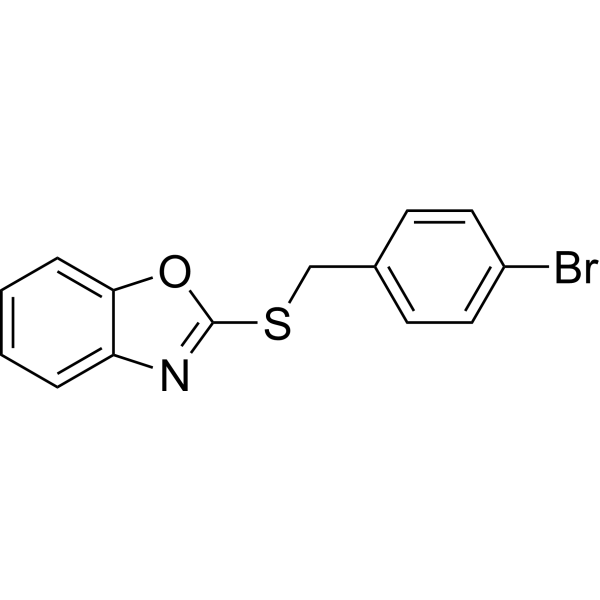
|
| DC74156 | S-181 Featured |
S-181 (S 181) is a specific small-molecule activator (modulator) of β-glucocerebrosidase (GCase) with AC50 of 1.49 uM and a maximum activation of 780%.
More description
|
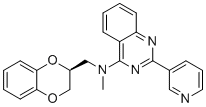
|
| DC10905 | Exo1 Featured |
Exo1 is a cell-permeable, reversible inhibitor of exocytosis (IC50 = 20 µM).
More description
|
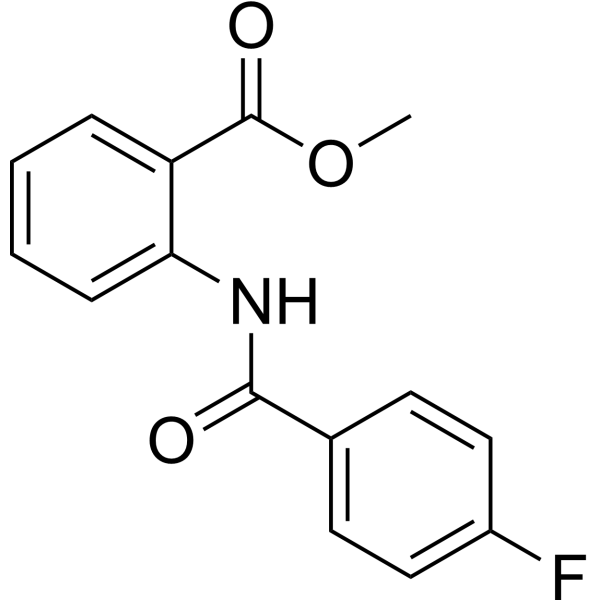
|
| DC22391 | Olorofim(F-901318) |
Olorofim (F901318) selectively inhibits fungal dihydroorotate dehydrogenase (DHODH), a key enzyme in the pyrimidine biosynthesis pathway. Olorofim (F901318). Olorofim exhibits excellent activity against A. fumigatus and other Aspergillus spp.
More description
|
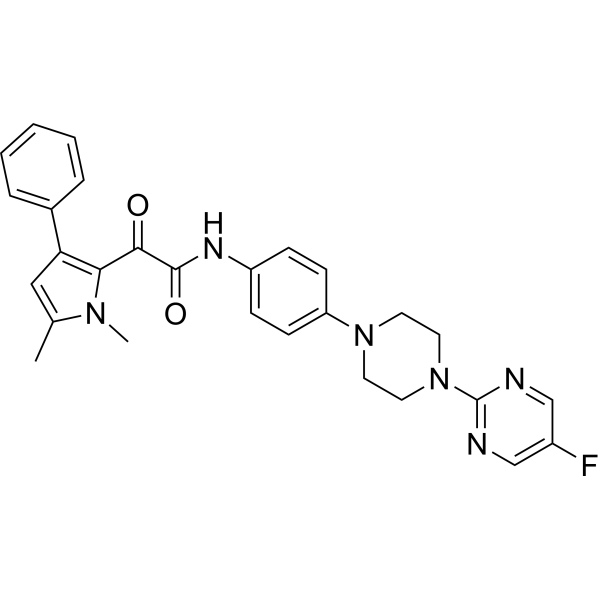
|
| DC32537 | GSK864 Featured |
GSK864 is a potent and selective inhibitor of mutant IDH1. GSK864 inhibits IDH1 mutants R132C/R132H/R132G with IC50 values of 9/15/17 nM, respectively, and is moderately selective over wild-type IDH1 and IDH2 mutants/wild-type. Treatment of R132C IDH1 mutant HT-1080 cells for 24 hours with GSK864 results in a dose-dependent reduction of 2-hydroxyglutarate (2-HG), which is not observed with GSK990, a structurally similar compound which is inactive as an IDH1 inhibitor. GSK864 has been shown to be selective in vitro for IDH1 over other classes of proteins (7TMs, ion channels, kinases) and chemoproteomic studies with GSK321, an analog of GSK864, confirm selective binding of IDH1 by this chemical series. GSK864 has a pharmacokinetic profile suitable for in vivo studies.
More description
|
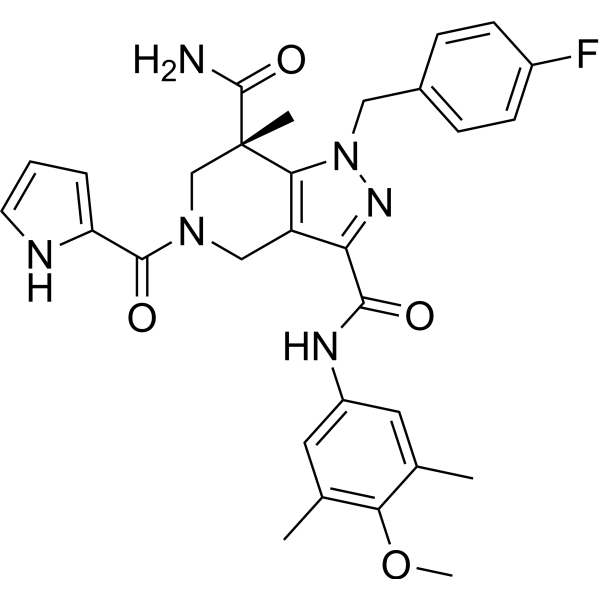
|
| DC22108 | HOIPIN-8 Featured |
HOIPIN-8 (HOIP inhibitor-8) is a potent chemical inhibitor of linear ubiquitin chain assembly complex (LUBAC, IC50=11 nM), specifically generates Met1-linked linear ubiquitin chains through the ubiquitin ligase activity in HOIP, and activates the NF-kB pa
More description
|
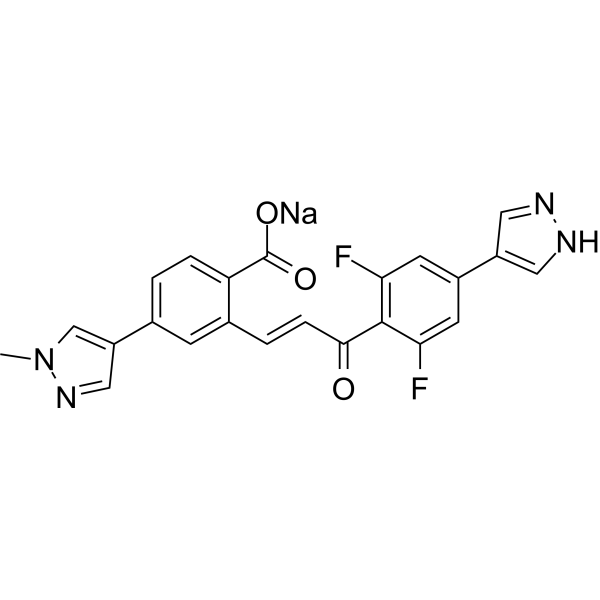
|
| DC22375 | RS-102895 Featured |
RS102895 is a potent CCR2 antagonist, with an IC50 of 360 nM, and shows no effect on CCR1.
More description
|
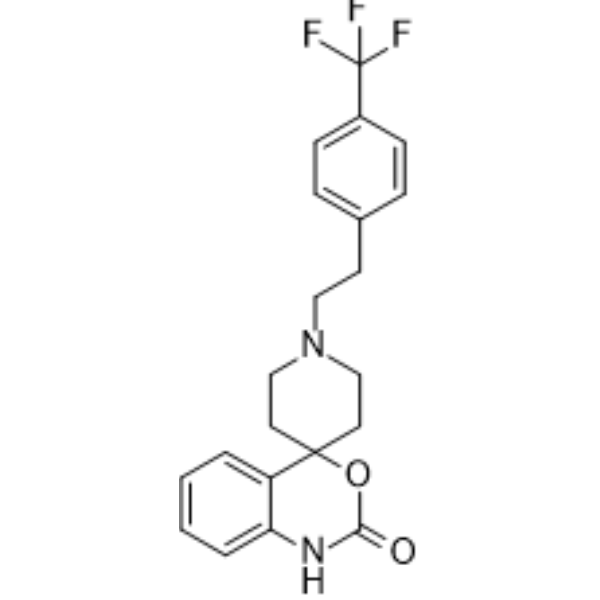
|
| DC74223 | X-Neu5Ac Featured |
X-Neu5Ac (sodium) is a substrate for chromogenic assay of neuraminidase activity in bacterial expression systems; with a Km of 0.89 mM for neuraminidase.
More description
|
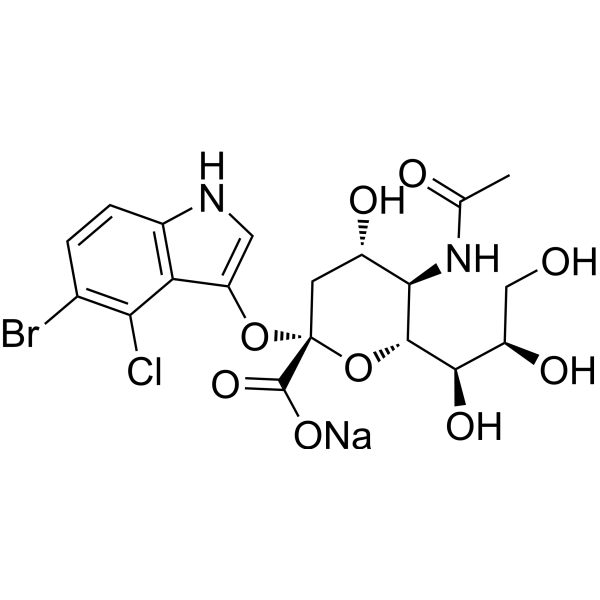
|
| DC20712 | AZ13705339 Featured |
AZ13705339 is a potent, selective PAK1 inhibitor with IC50 of 0.33 nM, displays 14-, 470-, 4100- and 2600-fold selectivity over Src, FGFR1, KDR and PAK4.
More description
|

|
| DC28150 | Ro 90-7501 Featured |
Ro 90-7501 is an amyloid β42 (Aβ42) fibril assembly inhibitor that reduces Aβ42-induced cytotoxicity (EC50 of 2 μM). Ro 90-7501 inhibits ATM phosphorylation and DNA repair. RO 90-7501 selectively enhances toll-like receptor 3 (TLR3) and RIG-I-like receptor (RLR) ligand-induced IFN-β gene expression and antiviral response. Ro 90-7501 also inhibits protein phosphatase 5 (PP5) in a TPR-dependent manner. Ro 90-7501 has significant radiosensitizing effects on cervical cancer cells.
More description
|

|
| DC33311 | MM11253 Featured |
MM11253 is a potent and selective RARγ antagonist with an IC50 of 44 nM. MM11253 has lower inhibition of RARα, RARβ and RXRα. MM11253 blocks the growth inhibitory effects of RARγ-selective agonists.
More description
|
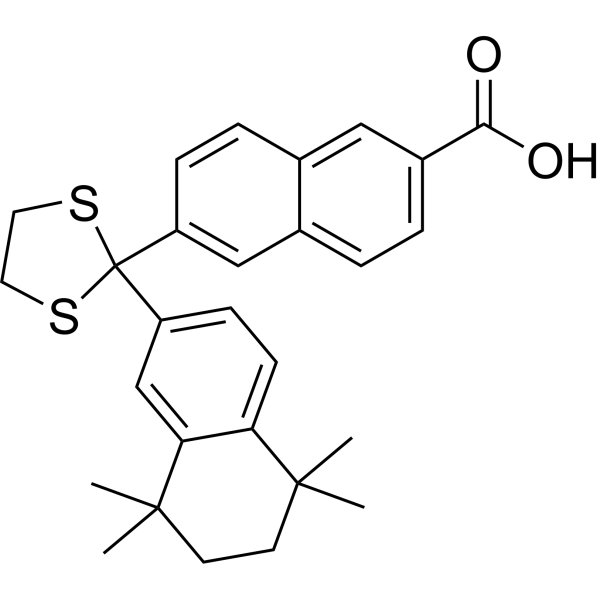
|
| DCX-025 | Sanguinarine Featured |
Sanguinarine (Sanguinarin), a benzophenanthridine alkaloid derived from the root of Sanguinaria Canadensis, can stimulate apoptosis via activating the production of reactive oxygen species (ROS). Sanguinarine-induced apoptosis is associated with the activation of JNK and NF-κB.
At equivalent molar concentrations, both the salt and free forms of a compound exhibit comparable biological activity. Nevertheless, the salt form (Sanguinarine chloride) usually boasts enhanced water solubility and stability.
More description
|
.gif)
|
| DC48326 | ELOVL1-IN-3 Featured |
ELOVL1-IN-3 (Compound 22) is a potent and orally active inhibitor of elongation of very long chain fatty acid 1 (ELOVL1) enzyme. ELOVL1-IN-3 serves as a useful tool for researching adrenoleukodystrophy (ALD)[1].
More description
|
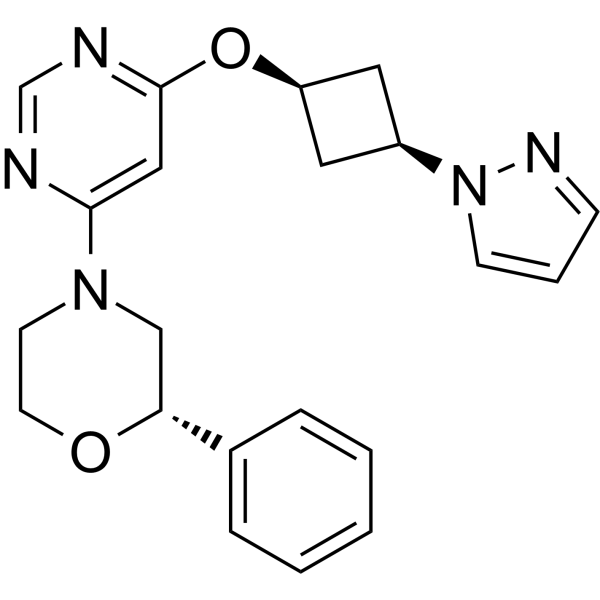
|